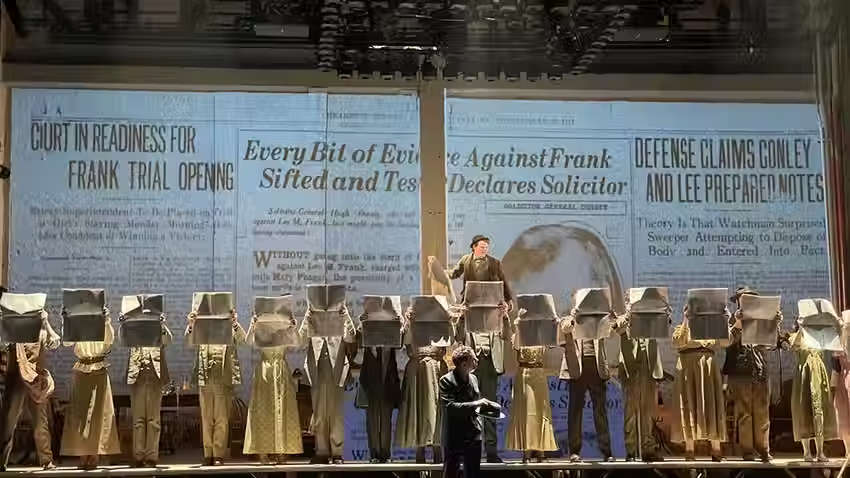Mastering the Art of Theatrical Projection Design
- Jeff Davis

- Jun 30
- 4 min read
The world of theater is ever-evolving, and one of the most innovative components enhancing storytelling is projection design. As a seamless blend of technology and artistry, projections can transform any space, elevating the narrative through visual effects. This blog aims to explore various projection design methods, offering insights that will help you master this important aspect of theatrical production.
Understanding Projection Design Methods
Projection design methods encompass a variety of techniques and technologies used to create visual effects in theater. These methods can range from static images to dynamic animations and video clips. Each approach serves to enhance the audience’s experience and contribute to the storyline.
In modern theater productions, projections replace traditional scenery allowing for versatile backgrounds. For example, a simple rotating image can depict a journey through time or a change in location instantaneously. This adaptability is crucial for keeping the pace of the story engaging.

Types of Projection Techniques
When looking at projection design methods, it is essential to distinguish between various types of techniques. Here are some compelling examples:
1. Standard Surfaces
The most common use of projections involves projecting images or video onto a flat, standard surface such as a wall or a screen. Standard surfaces are most often projected on from the front, meaning the projector is hung or placed in front of or downstage of the projection surface. However, some venues and projection surfaces can allow for rear projection, meaning the projector is placed behind or upstage of the screen or fabric being used as a projection surface. Rear projection requires a certain amount of space behind the projection surface, but it typically creates a brighter image as the light from the projector does not have to compete with ambient light or stage lighting in the theater.
2. Projection Mapping
Projection mapping involves projecting images onto complex surfaces. This method creates a three-dimensional effect, often used for buildings or any irregularly shaped objects. For example, the Broadway musical Frozen projection mapped their entire set and stage and used the projection mapping to great effect in a sequence where the entire environment "freezes" within seconds.
3. Live Camera Feeds
Incorporating live feeds from cameras into stage performances adds an element of real-time interactivity. This method is particularly powerful during musical numbers or scenes that require audience engagement. It creates an immediate connection between the performers and the audience. This technique is obviously very expensive, but it has been used to great effect in many recent Broadway productions, such as Here Lies Love, Sunset Blvd., and The Picture of Dorian Gray.

The Importance of Software in Projection Design
The right software can significantly affect the quality and creativity of projections. Programmers and designers must utilize tools that not only allow for image manipulation but also enable real-time updates. Some widely used software in the industry includes:
QLab: Primarily used for cueing audio, video, and lighting. QLab is considered by many to be the gold standard in cueing systems for small and medium sized theaters.
ShowCueSystems: Similar to QLab though not quite as robust in its abilities, ShowCueSystems is a great low-cost cueing system for audio and video files.
MadMapper: This tool specializes in projection mapping, making it easy to manipulate visuals on stage.
Understanding your software's features can help you devise engaging scenes. Proper training in these programs will allow a smoother production process as you combine various forms of media creatively.
Enhancing Narration through Projections
Projection design offers a unique opportunity to enhance storytelling. Here are a few ways to utilize projections effectively:
Mood Setting: Projections can set a specific tone or atmosphere, whether it's a warm, cozy living room or a desolate wasteland.
Contextual Backdrops: Adding background scenery enhances the setting, providing context without overwhelming the audience or distracting them from the characters.
Character Development: By projecting visuals that represent a character's thoughts or experiences, you provide insight into their journey subconsciously.
Practical Recommendations
Collaborate with Your Team: Always involve directors, actors, and stage crew for a cohesive vision.
Test Rigorously: Conduct thorough tests with your equipment on-site to ensure optimal projections before the show.
Stay Flexible: Be prepared to adjust your projections based on the venue and audience engagement.

The Future of Projection Design
As technology continues to advance, the future of projection design looks promising. Augmented reality (AR) and Artificial Intelligence (AI) are beginning to play essential roles in theater. Innovations like these will redefine how productions depict narratives, allowing for more immersive experiences, and the cost of equipment and software is getting lower over time.
Embracing these new technologies alongside traditional methods creates a unique hybrid that can keep pace with changing audience expectations. This evolution will depend on creativity, adaptability, and a willingness to experiment.
The field of projection design offers endless possibilities for artistic expression. As one dives deeper into this form of theatrical enhancement, the potential to captivate an audience only grows. Explore your options and become familiar with the various methods to create engaging stories that resonate.
Mastering the art of theatrical projection design requires both technical skill and a touch of creativity. By understanding the various techniques and tools available and staying attuned to future trends, you can elevate your theater productions like never before.

Comments